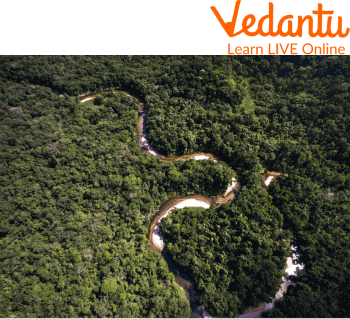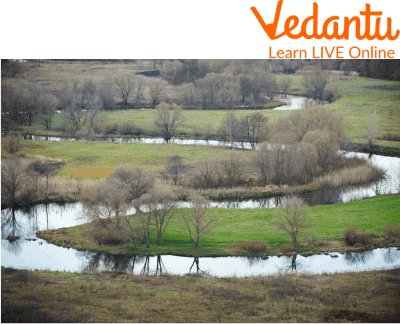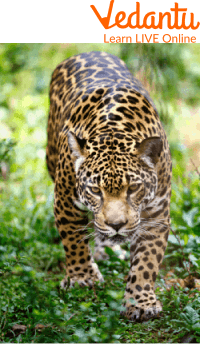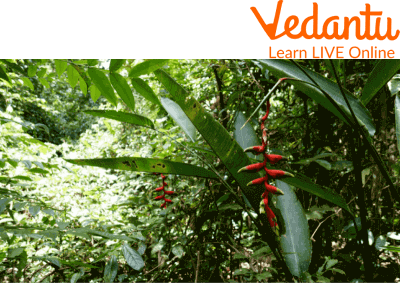




Why Is the Amazon Rainforest Important?
The Amazon rainforest is the largest tropical rainforest on earth, covering about 5.4 million square kilometres (2.1 million square miles) with nearly one-fifth or 1 billion of earth's total forest coverage and about 40% of its overall land surface. Brazil, Bolivia, Peru, Ecuador, Colombia, Venezuela, Guyana, and Suriname all contain the Amazon Rainforest.
It is home to 2.5 million insect species, 1,300 bird species, 3000 marine species and more than 40,000 plant species. The world's largest rainforest has been destroyed to make room for agriculture, logging, and grazing land since the beginning of human civilization. Today, let us learn more about the amazing Amazon rainforest and some interesting facts about the Amazon rainforest.

The Amazon Rainforest
The Amazon Rainforest
The Amazon is larger than the next two largest rainforests combined in the basin of Congo and Indonesia. At 6.9 million square kilometres (2.72 million square miles), the Amazon Basin is roughly the size of the forty-eight contiguous United States and covers some 40 per cent of the South American continent. Nearly two-thirds of the Amazon rainforest is found in Brazil.
Where Does the Amazon River Originate?
Now, you must be wondering from where the Amazon river originates. The Amazon river originates in the Andes Mountains located in western South America. The river flows through the tropical rainforest areas and especially in Brazil which has the maximum number of tropical rainforests.

The Amazon River
25 Facts About Amazon Rainforest
Let’s quickly get over 25 interesting facts about Amazon rainforest:

Leopard in the Amazon Rainforest
Largest Rainforest on Earth: It covers 2.1 million square kilometres, which is a little less than half of the continent’s total area.
Diverse Ecosystem: The Amazonian rainforest has a very diverse ecosystem with an incredible number of plant and animal species.
Sources 1/5 of the World’s Total Oxygen: It also produces 20% of the world’s oxygen and provides a livelihood for one-fifth of all people on earth.
Home to Millions: The Amazon rainforest is home to about one-third of the world's species.
Passage of the Second Longest River in the World: The Amazon River is the second longest river in the world and it flows through the Amazon rainforest.
More than 2000 Trees: The rainforest has many plants that are unique to this region, including over 20,000 different species of trees.
More than 3000 Birds: The rainforest has many birds too that are unique to this region, including over 3,000 types of birds.
Lungs of Our Planet: The Amazon Rainforest has been called "the lungs of our planet" because it produces 20% of the Earth's oxygen.
Could Help us Reduce Paper Waste: It's been estimated that we could have used 100 times less paper if all our pages were made from paper produced in the Amazon.
Change in Flow: It used to flow westward earlier but with the rising Andes it started flowing into the Atlantic Ocean and hence moves east-wards now.
Home to a Large Species of Insects: It has around 2.5 million species of insects in its canopy.
Contributes to Improving South America’s GDP: About 70% of South America’s GDP comes from the areas that receive rainfall or water from the Amazon rainforest.
Extinction at its Height: Deforestation and cattle ranching leads to thousands of species getting extinct every day in the amazon rainforest.
Very Thick and Dense: The Amazon rainforest is so thick that only 1% of sunlight touches the ground of the forest and it takes a lot of time for the water to reach the ground when it rains.
The Sahara Desert Acts as a Fertiliser for the Amazon Rainforest: The dust that blows from the Sahara desert via wind is rich in phosphorus and helps the amazon rainforest grow.
Source of Almost 80% of the World’s Food: Amazon is known to be the origin of 80% of the food varieties we see around the world today.
Carbon Sink: The Amazon rainforest is also popularly known as the carbon sink for it absorbs a huge amount of carbon dioxide from the atmosphere.
Wildfire in the Amazon Rainforest: The wildfire breakout in the Amazon rainforest in the year 2019 led to the major devastation of the forest and could be seen from space too.
Vegetation: The Amazon rainforest has the richest vegetation in the world.
Effect of Climate Change: It is believed that if there is a rise in temperature by even 3 degrees then 75% of the rainforest could get destroyed.
Permanent Darkness: The canopy of the amazon rainforest is so thick that it is dark in the forest all the time.
Home to Many Fascinating & Deadly Creatures: Many deadly and venomous animals like anacondas, jaguars, reels etc. are found here. Many rare amazon rainforest animals like jaguars, harpy eagles, pink river dolphins, sloths, black spider monkeys, and poison dart frogs are inhabitants here. And hence it is home to many rare animals.
Origin of the Name ‘ Amazon’: It is named after a female warrior, one of the tribal people living in the rainforest who fought with the Spanish explorer for the rainforest
Not Agro-Friendly: The Amazon rainforest is not friendly for agriculture because of the lack of mineral content in its soil.
Biggest Pharmacy: The Amazon rainforest is full of plants and trees that are rich in medicinal properties and known as the storehouse of many medicines.
Biodiversity in Amazon
Dangerous Plants of the Amazon Rainforest

Amazon Rainforest Dangerous Plants
The Amazon rainforest is also home to many dangerous plants. Giant Water Lily, Victoria amazonica, Heliconia, Heliconialatispatha, Cacao, Theobroma cacao, Passionflower, Passiflora edulis and more. The coffee plant, Coffea Arabica, Monkey Brush Vines, Combretum rotundifolium, Orchids and Orchidaceae are the various dangerous plants of the Amazon rainforest.
Rare Amazon Rainforest Animals
Here are few examples of amazon rainforest animals:
The South American Tapir is the second largest mammal on the continent. Tapirs are unique-looking animals, with snouts that look like the base of an elephant’s trunk, and hooves. They are usually found near water and feed on clay licks found in the rainforest.
The golden lion tamarin, also called the golden marmoset, is one of the rarest animals in the Amazon rainforest. They are striking-looking creatures whose bright orange mane resembles a lion, hence their name. The golden lion tamarin sleeps in a different place each night in order to minimise the scent left behind, reducing the likelihood of predators finding them.
The Amazon is home to 423 different species of frog, but the poison dart frog is probably the most famous. These little frogs are brightly colored and notoriously poisonous. Their colours range from bright red to orange and green, and it is this vibrant colour that warns off predators. Poison dart frogs get their name from a group of Amazon indigenous people who cover the tip of their darts with the frog poison to kill their prey.
Summary
The Amazon rainforest is the world's richest and globally recognised tropical forest when it comes to biodiversity and area. It is one of the most-varied biological reservoirs, containing several million species of insects, plants, birds, and other forms of life. The Amazon has over half of the planet's rainforest area. It has many species of plants including rosewood, mahogany, and ebony. It is the largest and most species-rich tract of tropical rainforest in the world.
FAQs on 25 Amazing Facts About the Amazon Rainforest
1. What is the difference between the Amazon River being the largest and the longest river?
The Amazon River is the world's largest river by the volume of water it discharges into the ocean—it carries more water than any other river system. However, it is generally considered the second-longest river in the world. The Nile River in Africa holds the title for the longest river by a small margin.
2. How does the Amazon rainforest contribute to the discovery of new species?
The Amazon rainforest is a global hotspot for biodiversity. Its vast and complex ecosystem is home to millions of species, many of which remain undiscovered by science. Due to this immense richness, experts estimate that a new species of plant or animal is formally discovered there approximately every two days.
3. What are some common misconceptions about the Amazon rainforest?
A common misconception is that all animals in the Amazon live in the trees. While many are arboreal, a huge number of species live on the forest floor or in its many rivers. Another mistaken belief is that the rainforest lacks major predators; in reality, it is home to powerful hunters like the jaguar, green anaconda, and black caiman.
4. Is the Amazon rainforest related to the Amazon company?
No, there is no direct connection. The company Amazon.com was named after the river by its founder to evoke a sense of immense scale, similar to the vastness of the Amazon River. The rainforest and river are natural ecosystems, while the company is a multinational technology and e-commerce business.
5. What makes a forest like the Amazon a "tropical rainforest"?
A tropical rainforest is a specific type of forest ecosystem defined by its location and climate. Key features that define the Amazon as a tropical rainforest include:
- High Annual Rainfall: It receives over 2,000 mm of rain each year, keeping it lush and green.
- Consistent Warmth: Located near the equator, its temperature remains high and stable year-round.
- Dense Vegetation Layers: This climate supports dense plant growth in multiple layers, from the forest floor to a thick upper canopy that blocks most sunlight.
6. Why is the Amazon rainforest often called the 'Lungs of the Earth'?
This nickname highlights the vital importance of the Amazon in regulating the Earth's atmosphere. Through photosynthesis, the immense number of trees and plants absorb vast quantities of carbon dioxide (a major greenhouse gas) and release oxygen. This process helps to stabilise the global climate and produces a significant portion of the planet's oxygen.
7. If the Amazon receives so much rain, why isn't it just a giant swamp?
The Amazon rainforest avoids becoming a permanent swamp due to an efficient water management system. The dense, multi-layered tree canopy intercepts much of the rainfall. The water that reaches the ground is quickly absorbed by the extensive root systems of countless plants. The remaining runoff is efficiently channelled into a massive network of streams and tributaries that feed into the Amazon River, which drains the entire basin into the Atlantic Ocean.
8. Do people live in the Amazon rainforest?
Yes, millions of people live in the Amazon basin. This population includes residents of large cities like Manaus and Iquitos, as well as hundreds of distinct Indigenous communities. These indigenous groups have inhabited the rainforest for centuries, developing unique cultures and a deep, sustainable understanding of the forest ecosystem.
9. What are some examples of unique animals found in the Amazon?
The Amazon is famous for its unique wildlife, many of which are found nowhere else on Earth. A few examples include:
- The Pink River Dolphin (Boto), a freshwater dolphin.
- The Sloth, known for its extremely slow movement through the tree canopy.
- The Poison Dart Frog, small frogs with vibrant colours that signal their toxicity.
- The Capybara, the world's largest rodent, which lives near water bodies.
10. What is the global importance of stopping deforestation in the Amazon?
Stopping deforestation in the Amazon is critical for the entire planet. The consequences of its continued destruction include:
- Accelerated Climate Change: Fewer trees mean less absorption of atmospheric carbon dioxide.
- Loss of Biodiversity: The destruction of habitats leads to the extinction of countless plant and animal species, some of which could hold potential for new medicines.
- Disruption of Water Cycles: The Amazon plays a crucial role in regional and even global weather patterns, and its loss can alter rainfall in other parts of the world.





















